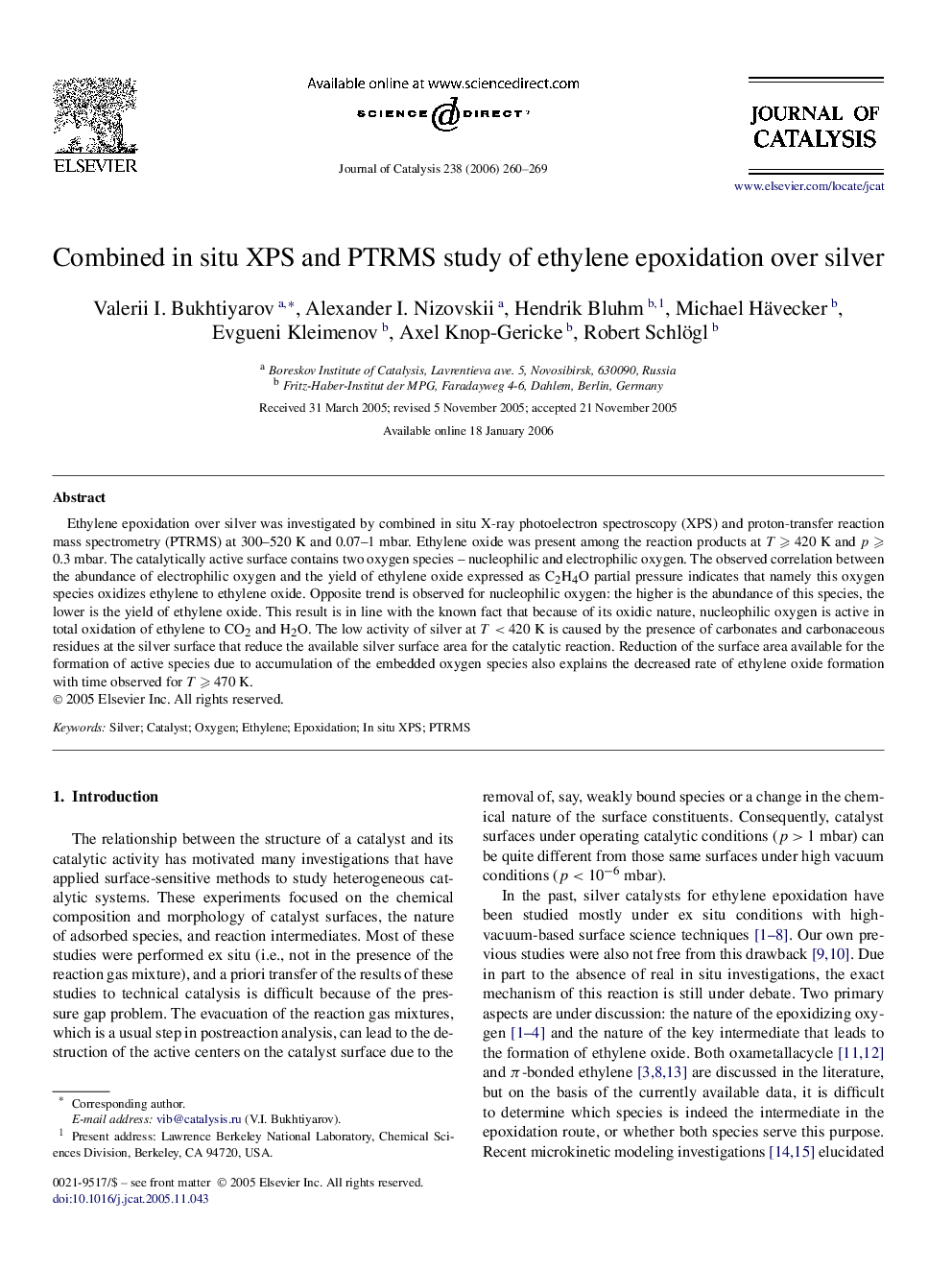| Article ID | Journal | Published Year | Pages | File Type |
|---|---|---|---|---|
| 63213 | Journal of Catalysis | 2006 | 10 Pages |
Ethylene epoxidation over silver was investigated by combined in situ X-ray photoelectron spectroscopy (XPS) and proton-transfer reaction mass spectrometry (PTRMS) at 300–520 K and 0.07–1 mbar. Ethylene oxide was present among the reaction products at T⩾420 KT⩾420 K and p⩾0.3 mbarp⩾0.3 mbar. The catalytically active surface contains two oxygen species – nucleophilic and electrophilic oxygen. The observed correlation between the abundance of electrophilic oxygen and the yield of ethylene oxide expressed as C2H4O partial pressure indicates that namely this oxygen species oxidizes ethylene to ethylene oxide. Opposite trend is observed for nucleophilic oxygen: the higher is the abundance of this species, the lower is the yield of ethylene oxide. This result is in line with the known fact that because of its oxidic nature, nucleophilic oxygen is active in total oxidation of ethylene to CO2 and H2O. The low activity of silver at T<420 KT<420 K is caused by the presence of carbonates and carbonaceous residues at the silver surface that reduce the available silver surface area for the catalytic reaction. Reduction of the surface area available for the formation of active species due to accumulation of the embedded oxygen species also explains the decreased rate of ethylene oxide formation with time observed for T⩾470 KT⩾470 K.
